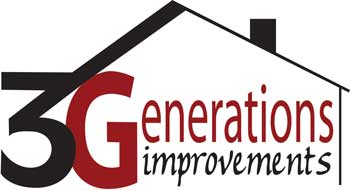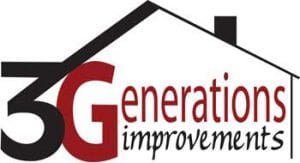Probably the most ubiquitous siding material used in residential construction, T1-11 siding reached its height of popularity in the 1960’s, 70’s and early 80’s. This was time when the trend for a more natural, wood-grained look was all the rage.
The siding material of choice for many contractors, especially those building vast swaths of suburban housing tracts, was T1-11. However, in the last few decades, its use has dropped off as other siding materials, such as engineered wood, composite and vinyl siding, have taken over the market. Essentially, T1-11, often referred to as “T111”, are wood or wood-based siding products that are still available today.
Get a Free T1-11 Siding Estimate
Fill out the form below for a free T1-11 Siding estimate or call 3G Home Improvements on (877) 932-2315 for more information or to schedule your free in-home estimate today!
T1-11 Siding Explained
T1-11 siding comes in two major grades: plywood and OSB, which stands for ‘Oriented Strand Board.’ The plywood product is slightly more expensive than its OSB cousin although they are both are quite comparable in terms of strength and functionality.
However, the plywood version of T1-11 is far superior overall to the OSB version because of its greater durability and the variety of finishing options it offers.
Plywood T1-11 is also known simply as plywood siding. A versatile material, it can be stained to simulate a natural wood look, or it can be primed and painted. Additionally, T1-11 plywood siding can be purchased in either sanded or roughhewn varieties, depending on the finished look desired.
Another plus for T1-11, whether it’s the plywood or OSB variety, is the relatively low cost. For many homeowners looking to replace their existing siding, or contractors looking for a cost-effective option for siding their current project, T1-11 offers an affordable choice that is still considered a durable material.
Why OSB Grade T-1-11 Siding Fails
The problem with T1-11 siding, however, is not with its cost, functionality or even the aesthetics. The stigma around T1-11 today is its legacy of water damage.
This is not the case nearly as much with the plywood version of T1-11. The process for making plywood siding creates a far superior product in terms of durability and resistance to moisture. However, that being said, without proper installation, sealing and maintenance, even the plywood siding is prone to deterioration over time.
OSB siding, on the other hand, is made of wood flakes, strands and water-treated with a binding resin and then sealed together using pressure and heat. As a result, OSB siding is also referred to as waferboard siding. While this product is a relatively strong, inexpensive and widely used material for home construction, it doesn’t hold up nearly as well as the plywood version.
As a result of the manufacturing process, OSB is especially prone to water damage over time. If the material gets wet the moisture causes expansion, flaking, chipping and rot. OSB has been shown to have a high moisture absorption rate on its edges after being installed. This is because the production of OSB siding uses a high concentration of natural wooden pieces such as thin wood flakes, cellulose fiber strands and natural resins that make the siding more permeable to moisture. This, in turn, makes it quite vulnerable to moisture and, when exposed to moisture, can be damaged easily.
In addition to the exterior damage that results, some homeowners with OSB siding on their homes may also suffer mold and structural damage to the interior walls of the house.
While much of this type of exposure and subsequent damage can be avoided, or at least minimized, with proper sealing and ongoing maintenance, this isn’t always done. Although the history of T1-11 OSB siding is rife with instances of water and moisture damage, some of the blame can also be put on the builders who chose to use a material that was not a good fit for a particular locale, or who failed to seal and cover the edges properly.
LP SmartSide Engineered siding is a a strand board that looks like T1-11 OSB, but is not to be confused – the LP Smartside is a treated surface that far outperforms.
In addition, there are many instances of OSB materials being used in ways clearly not recommended such as on roofs and exterior decking. While this can be chalked up to either ignorance or unethical building practices, the results still reflect badly on OSB as a preferred building material.
Should You Use T1-11 Siding?
Despite the bad press received by T1-11 siding, particularly the OSB variety, it is still a viable product for many residential and smaller commercial uses. T1-11 siding is strong, highly functional and durable – it has a long life as compared to other sidings. However, for many in the building community, it is thought of as cheap and is considered a low-quality material.
As noted already, the preparation, sealing and maintenance of T1-11 siding is for protecting it against water, sunlight, and excessive heat. For example, painting or sealing is a mandatory task and must be repeated every few years.
Other siding options that you can – and probably should – consider for a wood-grained look are wood sidings such as engineered wood, fiber cement siding and polymer insulated siding.
Get a Free T1-11 Siding Estimate
We hope the information in this post was useful, don’t forget you can fill out the form below for a free T1-11 Siding estimate or call 3 Generations Home Improvements on (877) 932-2315 for more information or to schedule your free in-home estimate today!

